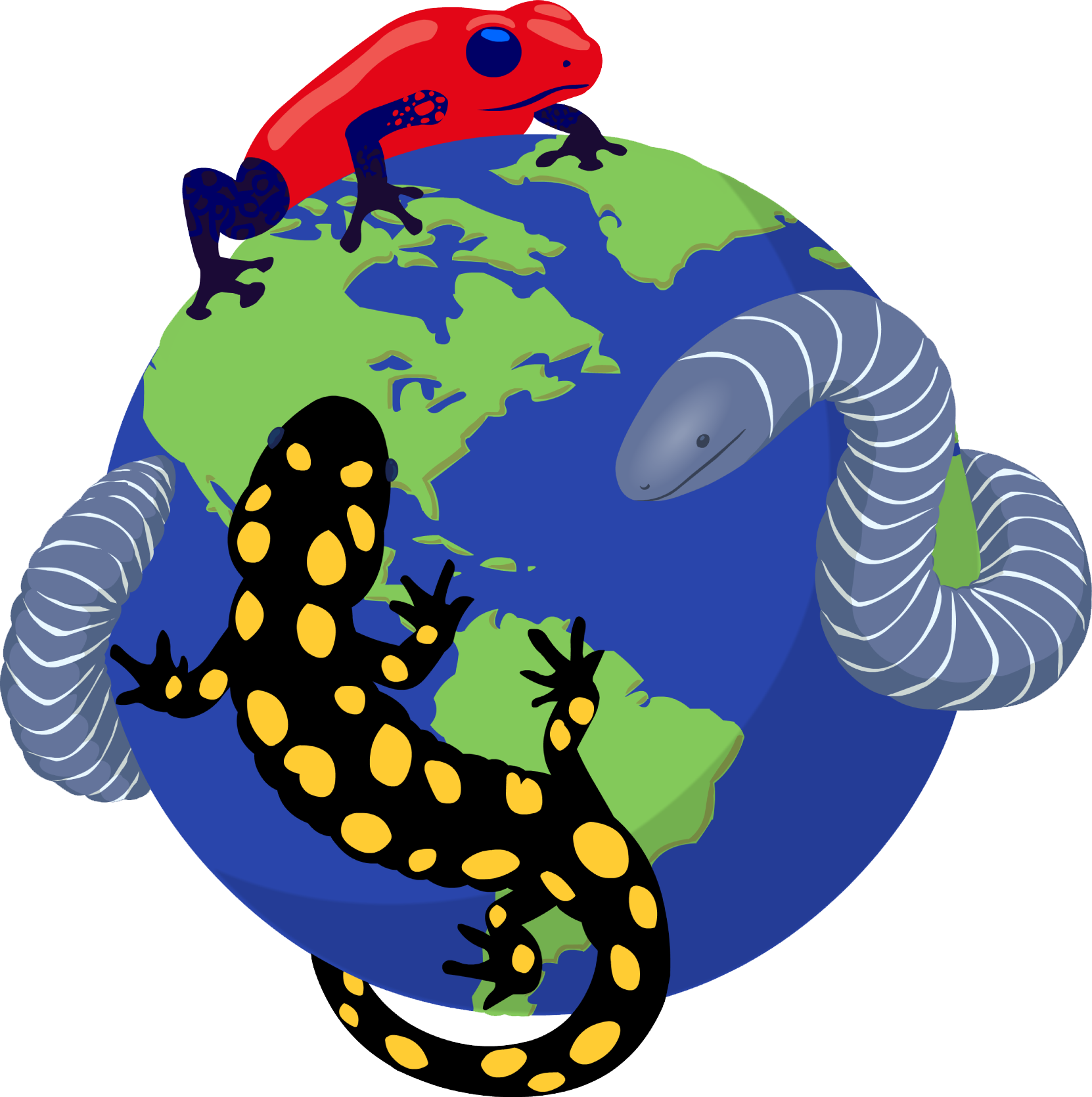|
Bolitoglossa awajun Cusi, Gagliardi-Urrutia, Brcko, Wake & von May, 2020
Awajun salamander, Salamandra Awajun Subgenus: Eladinea | family: Plethodontidae subfamily: Hemidactyliinae genus: Bolitoglossa |
| Species Description: Cusi JC, Gagliardi-Urrutia G, Brcko IC, Wake DB, Von May R. 2020. Taxonomic status of the Neotropical salamanders Bolitoglossa altamazonica and Bolitoglossa peruviana (Amphibia: Caudata: Plethodontidae), with the description of a new species from Northern Peru. Zootaxa 4834:365-406. | |
|
|
|
Description DIAGNOSIS: Bolitoglossa awajun is distinct from almost all other species in the subgenus Eladinea by its webbed hands and feet with pointed third fingers and toes. In addition, B. awajun has light, uneven blotches on its underside, while many other similar looking species have small, more uniform white or off-white spots. Bolitoglossa paraensis is comparable to B. awajun in these respects, but can be distinguished by morphometrics: on average, B. awajun has more closely placed eyes (0.46 mm vs. 0.61 mm in B. paraensis) and shorter forelimbs (4.18 mm vs. 4.50 mm in B. paraensis) (Cusi et. al 2020). COLORATION: The dorsum of B. awajun is a solid brown color. It has scattered light spots across its body and head and often a dark triangular patch between its eyes. The tip of its tail is often lighter than the rest of its body. The dorsal side is also darker than the rest of the body, with small white spots in addition to off-white mottling. In preservative, the color of the body tends to lighten and in some cases the underside appears gray (Cusi et. al 2020). VARIATION: The light brown patches on the body are extremely variable. One of the paratype had a light patch covering much of its face, while another only had lighter spots on its ventral and lateral sides. Both female and male specimens have been collected; females tended to be larger than males (Cusi et. al 2020). Distribution and Habitat Country distribution from AmphibiaWeb's database: Peru
Life History, Abundance, Activity, and Special Behaviors Larva Trends and Threats Possible reasons for amphibian decline General habitat alteration and loss Comments PHYLOGENETIC RELATIONSHIPS: Based on Maximum Likelihood and Bayesian analyses of Cytb and 16S mtDNA and RAG-1 and POMC nuclear DNA, B. awajun is most closely related to the clade containing B. altamazonica and B. peruviana in the Bolitoglossa altamazonica complex (Cusi et. al 2020). ETYMOLOGY: The species epithet, “awajun” is taken from an indigenous group, the Awajún or Aguaruna that live in the Amazonian rainforest near where the holotype was collected (Cusi et. al 2020).
References
Cusi, J. C., Gagliardi-Urrutia, G., Brcko, I. C., Wake, D. B., Von May, R. (2020). “Taxonomic status of the Neotropical salamanders Bolitoglossa altamazonica and Bolitoglossa peruviana (Amphibia:Caudata:Plethodontidae), with the descriptions of a new species from Northern Peru.” Zootaxa 4834(3), 365-406. [link] Wake, D. B., Lynch, J. F. (1976). ''The distribution, ecology, and evolutionary history of plethodontid salamanders in tropical America.'' Natural History Museum of Los Angeles County Science Bulletin, 25(1), 1-75. [link] Originally submitted by: Kyle Moxley (2022-10-26) Description by: Kyle Moxley (updated 2022-10-26)
Distribution by: Kyle Moxley (updated 2022-10-26)
Life history by: Kyle Moxley (updated 2022-10-26)
Larva by: Kyle Moxley (updated 2022-10-26)
Trends and threats by: Kyle Moxley (updated 2022-10-26)
Comments by: Kyle Moxley (updated 2022-10-26)
Edited by: Ann T. Chang, Michelle S. Koo (2024-05-20) Species Account Citation: AmphibiaWeb 2024 Bolitoglossa awajun: Awajun salamander <https://amphibiaweb.org/species/9250> University of California, Berkeley, CA, USA. Accessed Jun 6, 2025.
Feedback or comments about this page.
Citation: AmphibiaWeb. 2025. <https://amphibiaweb.org> University of California, Berkeley, CA, USA. Accessed 6 Jun 2025. AmphibiaWeb's policy on data use. |


 Map of Life
Map of Life